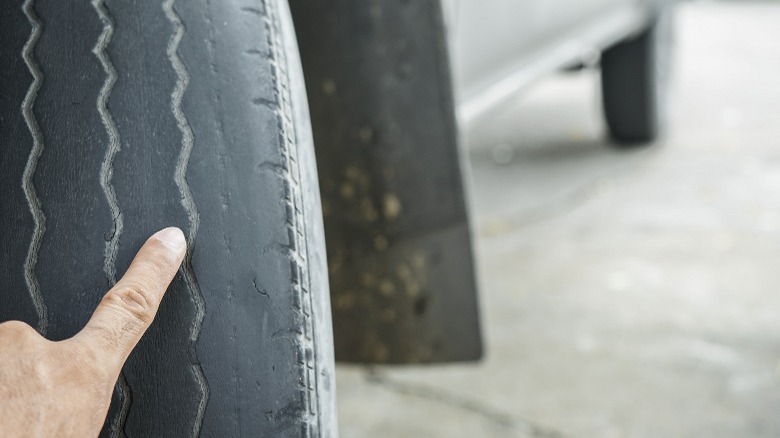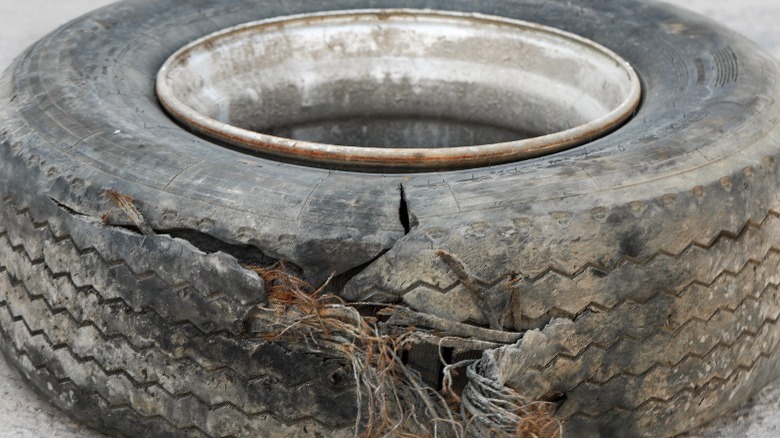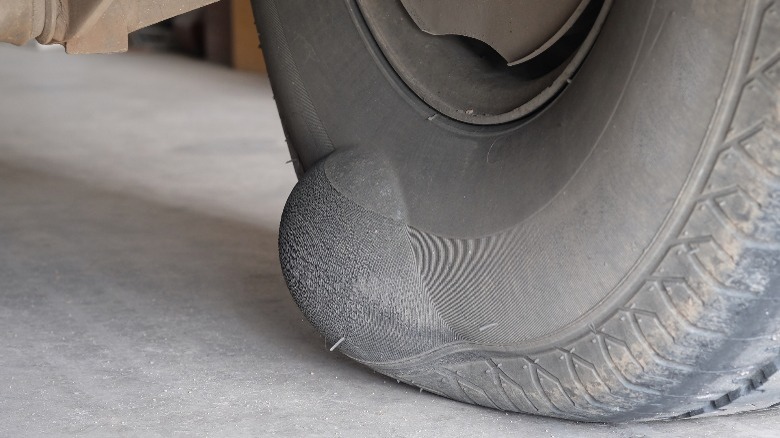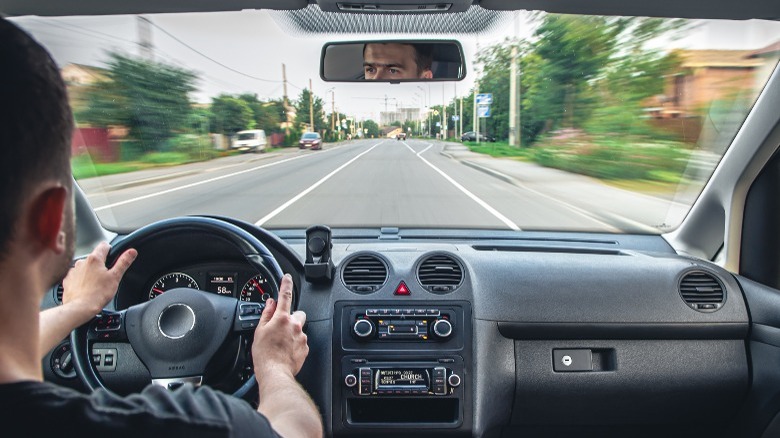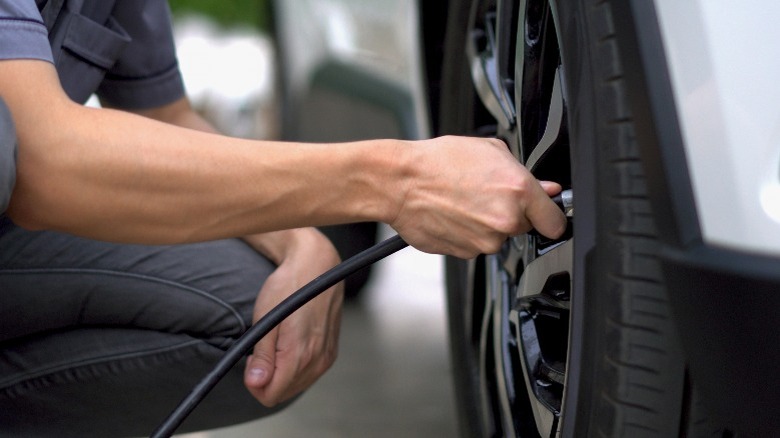5 Crucial Warning Signs That Your Tires Definitely Need To Be Replaced
Few things are more dangerous than driving with bad tires. Losing just one of your tires while on the road is enough to cause a major accident or irreversible damage to your vehicle. In fact, simply using tires without enough friction can prove fatal in some circumstances.
Tire treads are primarily made out of rubber, and while rubber is great for gripping on the road, it also wears out as it's used. This wearing out could be invisible for those who don't know what to look for. It doesn't help that tires don't wear out evenly, and if you don't rotate them often, you might see a drastic diminishing on one or two tires alone instead of the whole set.
With better tire-making techniques, they have progressively become sturdier, and they can last up to a decade without needing replacement if you take care of them well. However, you shouldn't wait the whole 10 years before replacing your tires, there are some telltale signs that your tires are damaged or worn and begging to be changed. Watch out for these to avoid tire failure.
Your tires have worn out unevenly
Uneven wear happens because tires aren't all exposed to the same stress level. For instance, the tires that take the brunt of the braking and those connected to the drivetrain have different loads. The NHTSA recommends that you rotate your tires every 5,000 to 8,000 miles. While that's a safe bet, reading your vehicle's manual is better to know how often you should rotate them and what rotation pattern is best.
Most people own a front-wheel drive (FWD) vehicle because they're cheaper to make and provide better traction. However, with FWD, the front tires are responsible for turning, braking, and propelling the car forward — that's a lot of stress. A diagram on the NHTSA's website suggests front-wheel drive cars should move their two front tires to the back, the left back tire to the front right, and the right back tire to the left front.
Unsurprisingly, rear-wheel and all-wheel drives have a different pattern for rotating tires. The diagram suggests an inverse for these drivetrains where you move your back tires to the front, then move your left front tire to the right back and the right front to the left back.
Nonetheless, if you notice your tires have worn out unevenly, you may have to replace all your tires. Be more careful in the future to avoid uneven wear because it can cause bad traction, leading to accidents.
Your tires are bald, or you can see tire cords
Some people might think that a tire comprises just rubber and air. But there are many layers to a tire. The visible rubber tread is the part of the tire that makes contact with the road, and beneath that, there are steel and textile cords that help keep the tire's shape. When your treads erode to the point where you see these cords, you need to change your tires ASAP.
In fact, you should have addressed this before seeing tire cords on your car. The NHTSA recommends that all tires have a minimum tread depth of 2/32 of an inch. Many standard tire brands create tires with built-in tread wear indicators so you know when exactly it's time to replace them.
You can also do a penny test to determine if your tires are bald. If you put a penny in your tire's tread with Abraham Lincoln's head upside down and facing you, and you can see the top of his head, you should change your tires.
Your tires are bulging
Generally, two parts of your tire could bulge: the tire sidewall and the tread. Most bulges are caused by impact damage that has ruptured the tire's interior. Potholes, bumpy roads, curbs, and similar things could cause this damage. While plowing bad roads at high speeds is a major culprit for this issue, sometimes stressing the tire by approaching things like curbs from a bad angle could cause a bulge.
It's not recommended you keep driving a car with a bulging tire, it means there's a "bubble" in the tire, and bubbles are prone to bursting. If your tire bursts while you're driving, you could cause serious harm to yourself and your vehicle — you could also harm other people on the road.
You should replace your bulging tire with a spare, and if you absolutely need to keep moving, move at slow speeds, and avoid anything bumpy. Stop frequently to check how big the bubble is. If it keeps growing, you should park and get help. You could repair a bulging tire but only use that as an emergency spare; the tire cannot be the same, and you should replace it with a new one for your safety.
Your car vibrates on smooth roads
There are many suspension, transmission, and wheel-bearing issues that could cause vibrations in a car. Once you've made sure that none of these are culprits, you should take a look at the tires, you may have a defective one.
There are some reparable tire issues that could cause these vibrations, such as flat spots, for example. Flat spots could happen when you park your car at a spot too long. There are also some tire issues addressed above that could cause vibrations, like uneven tread wear. But vibrations can also signal that you got a defective tire from the manufacturer.
Your tire could have come out of round, meaning it's not exactly as round as it should be. The result is you may have unbalanced contact with the road. You could try taking it to an expert for some balancing, but if you still notice these tire-caused vibrations, you may have no choice but to replace that tire. If left unchecked, it could affect your car's performance and cause excessive tire wear.
You're constantly re-pumping your tires
Holes will cause your tire to leak, and an overly porous tire is a disaster waiting to happen. There's an unspoken rule that you shouldn't patch your tire more than three times. If any of these punctures overlap, then you must change that tire. Additionally, according to the NHTSA, you should replace any tire with holes in its sidewall, but you can patch holes in the tread if they aren't too large.
Besides holes, old tires might be a reason you keep pumping your tires. When a tire ages too long, it gets cracks on its sidewall (also known as dry rot). These cracks can cause air to escape from your tire, and you may have to pump your tires frequently to keep them usable. Unbeknownst to you, your tires are about to fall apart. You should check how old your tires are; if they are above the 10-year limit, it's time to get new ones.

